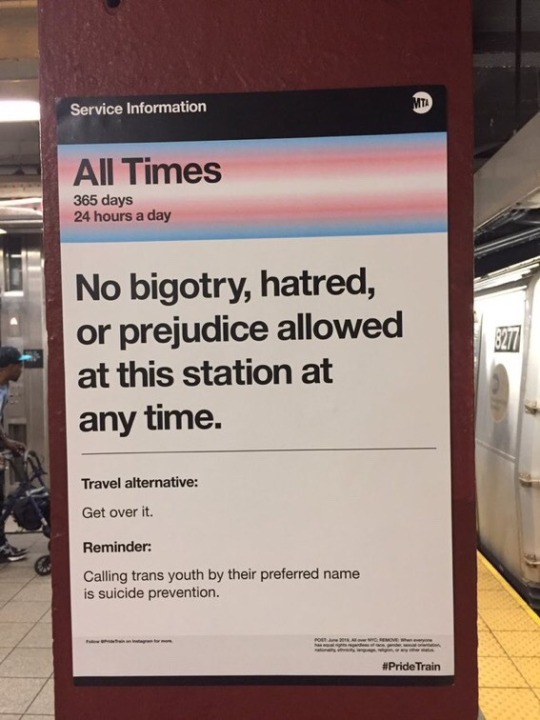Photo
Is this dark magician or blue eyes white dragon..

hmmm
5K notes
·
View notes
Text
50K notes
·
View notes
Text
A beautiful Sunday, no less!

118 notes
·
View notes
Text
Didn’t realize this but super interesting to be aware of
IPAWS, the Emergency Alert System, and the Failure to Know
Many of us, including myself, grew up terrified of the Emergency Alert System. The two-tone header tone was one of the few things that would cause me to run, screaming and crying to my mom. I remember one time in particular, I was home alone downstairs watching TV and a severe thunderstorm warning came across the TV, followed by the power cutting out. To this day, that remains one of the scariest moments of my childhood, trying to navigate my dark basement after hearing the weird, disembodied voice speak “a severe thunderstorm warning has been issued for your area.”
As I’ve gotten older and gotten more interested in emergency preparedness, civil defense, and everything generally related to the emergency alert system, the sound doesn’t frighten me as much anymore. In fact, I actually kind of look forward to getting alerts, and in my free time, I watch videos of alerts. I have my IPAWS certification from FEMA and even gave a speech about IPAWS at my university. But with this, I’ve started to realize how incredibly broken IPAWS is.
If you aren’t aware, IPAWS is our current national warning system. It was created in 2006, replacing the Emergency Alert System, which replaced the Emergency Broadcast System, which replaced CONELRAD. Replaced, however, isn’t exactly the correct term. IPAWS, or Integrated Public Alert and Warning System, is comprised of the Emergency Alert System, the Wireless Emergency Alert System, the Commercial Mobile Alert System, and local warning systems, including sirens, automated phone calls, text messages, or digital signs.
The Emergency Alert System (EAS) is concerned with television and radio alerts.
The Wireless Emergency Alert System (WEAS) and Commercial Mobile Alert System (CMAS) are concerned with mobile telephone alerts.
IPAWS works in a three step process. First, a local, state, territorial, tribal, or federal authority encodes a message in a format called the Common Alerting Protocol. Second, this message is sent through a gateway, known as IPAWS Open. It’s a secure, designated network solely for IPAWS. Lastly, the encoded message reaches the alert disseminators, which are the public systems such as the EAS, WEAS, and local systems. These systems decode the message sent and push it out to the public.
In theory, IPAWS is a centralized, organized system for alerting the public of everything from inclement weather to biohazard attacks. In practice however, IPAWS leaves a lot to be desired.
From its inception, IPAWS has been plagued by accidents and failures. From a Lady Gaga song playing during a national test to the ballistic missile alert in Hawaii, IPAWS is non-functional. I am writing this during a severe thunderstorm warning, and the EAS that scrolled across my TV started with the header noise, said “A severe weath-….The National Weath-….” and then stopped. Last night, an EAS test woke me up four separate times, and this happens almost every night. Sometimes, I get the alert on one TV but not another, or one channel but not another in the same house. I never get CMAS/WEAS alerts despite getting the monthly tests. Most of the time, even during tornado warnings, I don’t get any alerts besides for ones from the Weather Channel and WeatherBug.
And I am definitely not alone in experiencing this. People across the country constantly report garbled alerts, tests at random hours of the day, or just no alerts at all.
I want to like IPAWS, I want to support it and convince people who have lost their faith in the system that it is a vital program that keeps us safe. But increasingly so, it is failing to do exactly that. There is no reason why this system is so flawed. There is no reason why FEMA continues to ignore the glaring issues with IPAWS. It is an incredibly important system that keeps people alert, informed, and more importantly, alive, when things go wrong. This consistent failure to know is dangerous.
CONELRAD, even in its infancy, even with its limited use and glaring issues such as requiring a radio to be on 24/7, was almost better than IPAWS is right now, and that’s…terrifying.
I don’t really know what the solution is. I don’t know if my issues with the EAS stem from my cable provider, or my issues with the WEAS are with my mobile company. But do know that a single alert can be the difference between life and death, and while I have multiple third-party alerting systems like the Weather Channel and WeatherBug, not everyone does. Not everyone can read text scrolls on their TVs, not everyone can hear spoken messages or sirens. Not everyone has a mobile phone, or cable, or a radio. So IPAWS needs to cover all bases consistently.
29 notes
·
View notes
Photo
@mrs-chief




Goalkeepers’ balls get photoshopped into cats.
340K notes
·
View notes
Text

A terf posted this calling it "gaslighting" and "terrible" but I thought it was sweet so I'm reposting it from them.
81K notes
·
View notes
Photo

uhhh sketching some more
31 notes
·
View notes
Video
Made this PS1-style character today
Honestly was just an experiment to see if I could, but then the texturing was actually really fun and I learned a lot about unwrapping, so I went a little wild.

28 notes
·
View notes
Photo

rough morning
9 notes
·
View notes




